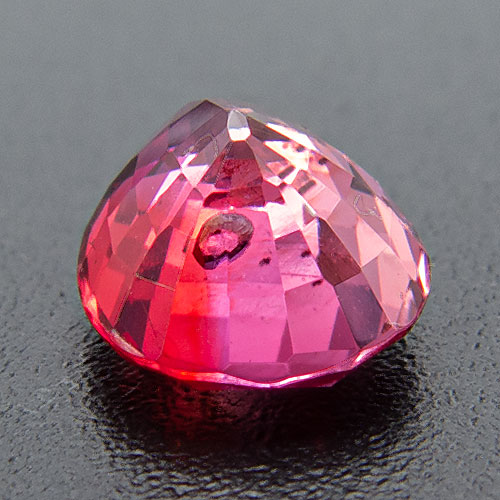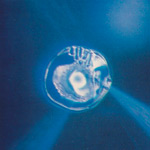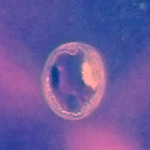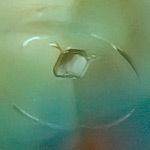How not to detect fake rubies
It´s commonplace that one should not believe everything which can be found in the internet.
Now we stumbled across a piece of "information" that really takes the biscuit!
Under the headline "4 Ways to Tell if a Ruby is Real" wikiHow ("the most trusted how-to site on the internet") spreads outlandish nonsense that takes your breath away. Read for yourselves:
Tell by the color and the shine. Real rubies glow with a deep, vivid, almost "stoplight" red. Fake gems are often dull: they are "light, but not bright." If the gem is more of a dark red, then it may be garnet instead of a ruby. If it is a real ruby, however, know that darker stones are usually worth more than lighter stones.
Comment: not all rubies are deep red. The spectrum encompasses every shade from pinkish red, bordering pink sapphire, to dark red and brownish red. The term "stoplight red", by the way, is totally inappropriate. The customary analogy, since times immemorial, is pidgeon blood red. However, we think even pidgeon blood red is unsuitable as a colour description. After all, how often did you see the blood of a freshly slaughtered pidgeon?
The statement that fake gems are often dull, is misleading. It is true that e.g. garnets do not show the same hard lustre as rubies, but garnets are not fake gems. "Fake" normally describes synthetic gems, not real gems used to imitate other gems. Synthetic rubies, on the other hand, are of the same chemical composition and possess the same physical and optical properties as natural ones and thus are equally "bright".
- Check for a consistent and even color throughout the stone. Fakes are more likely to contain blemishes and impure spots. That said: rubies do sometimes have imperfections.
Comment: consistent and even colour is no indication of genuineness. The photo below shows a natural ruby with distinctly patchy colour distribution.

The statement that fakes are more likely to contain blemishes and impure spots is downright humbug. Most Verneuil rubies are of perfectly even colour and highly clean. Most natural rubies, on the other hand, do show "blemishes" and "impure spots". Eye clean rubies are very rare (and very expensive), indeed. So much so that inclusions in rubies are tolerated much more than in many other gem stones.
- Use the "stoplight red" as a guide, but do not expect to find a real ruby that is actually that bright. If you do, then the ruby is likely fake. A real ruby should be more like a bright traffic light, however, than like a dull stone.
Comment: this means that bright rubies are likely to be fake. Now, apart from the fact that, of course, bright rubies do exist, the statement is contradicted in the very next sentence. Thus, a natural ruby will not actually be "that bright" but more "like a bright traffic light"...
Compare the ruby stone to a shard of red glass. Rubies and other varieties of sapphire are often faked as glass. If the glass and stone look similar, then you may just be holding two pieces of red glass! It is relatively common for dealers to fake rubies using a glass composite.
Comment: ruby is not a variety of sapphire but of corundum. The statement "if the glass and stone look similar" is rather fuzzy. Of course they look alike! How could the glass otherwise imitate ruby? Not a word is wasted on the differences between glass and ruby and how to detect them.
Also, we strongly reject the notion that it is relatively common (whatever this means) for dealers to fake rubies!
And, by the bye, dealers do not fake. Dealers deal and fakers fake - ok?
Try to scratch the surface. Real rubies are extremely hard stones. Grind a fingernail or a coin into the surface of the "ruby" and see if you are able to scratch it. If the ruby shows a scratch, then there's a good chance that it is not a real ruby. Only a diamond can scratch a ruby.
Comment: neither fingernails nor coins are hard enough to scratch garnet, tourmaline or even glass, so this "test" is useless. Moreover, the reverse conclusion is that a ruby is real if it cannot be scratched by fingernails or coins, which of course is wrong. Besides one could be tempted to conduct the test using a diamond, which would result in a scratch. In case of glass the damage is affordable but would you really like to scratch your ruby? On top of it, a scratch test cannot tell natural from synthetic rubies...
Know the types of fake. The stones commonly used as ruby imitations include garnets, tourmaline, glass, and composite gems.
Comment: the most dangerous "type of fake" is missing: synthetic ruby!
Expect microscopic flaws. Look for small, microscopic flaws that would otherwise be invisible to the naked eye. You should see some small imperfections on a real ruby. Fake and lab-created rubies are almost always flawless, as the natural flaws are so tiny that they are extremely hard to replicate.
What now? Further up it says "fakes are more likely to contain blemishes and impure spots". Make up your mind!
To say that lab-created rubies are almost always flawless is correct only for the cheapest and least dangerous synthetics, the above mentioned Verneuil stones. On the contrary, the most dangerous i.e. most difficult to detect synthetic gems are far from flawless. The ambition of producers of synthetic gems is to make identification as difficult as possible. Thus they strive to create gems with inclusions looking similar to inclusions in natural stones.
"Natural flaws are so tiny that they are extremely hard to replicate" is nonsense, too. Unfortunately inclusions in genuine rubies are not always "so tiny". Size is not the problem but it is very difficult to lab-create naturally looking mineral and "fingerprint" inclusions, healed fractures or the like.
- If you see bubbles of any kind, then you are likely dealing with a fake ruby. Look for flaws other than bubbles.
Comment: to be taken with a pinch of salt. It is true that gas bubbles are characteristic for glass and Verneuil synthetics (more for Verneuil sapphires, though, than for Verneuil rubies) but natural corundum often contains mineral inclusions surrounded by stress halos, which might be mistaken for gas bubbles by the untrained observer.



Look at the ruby's cuts and facets. The intricacies of the ruby surface will only be readily visible beneath a 10-power microscope. If the ruby is rounded, rolled, or excessively smooth, then it is probably a fake gem. The stone might be the real deal if the facet is clean, pristine, and sharp-cut.
Comment: glass is much softer than almost all gem stones and thus does not show equally sharp facet edges. So, rounded facet edges do hint towards glass. However, sharp facet edges do not prove that the gem in question is a natural ruby. It might still be garnet, spinel, red tourmaline or, matter-of-fact, synthetic.
wikiHow is where trusted research and expert knowledge come together.
My foot!
 Deutsch
Deutsch